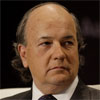Central Banks: Gold’s Greatest Ally
You’re likely aware of the price action in gold lately. Gold has rallied from $1,591 per ounce on April 1 to $1,782 per ounce as of today. That’s a 12% gain in less than three months.
My earlier forecast was that gold would hit $1,776 by the Fourth of July. I guess I was a bit early!
Today’s price of $1,782 per ounce is the highest since 2012 and a 70% gain from the low of $1,050 per ounce at the end of the last bear market in December 2015.
The history of gold bull markets (1971–80 and 1999–2011) shows that the most powerful gains come toward the end of the bull market, not at the beginning.
That means even if you’ve missed out on the gold rally so far, you could still score huge gains as gold trends toward $10,000 per ounce or higher over the next four years.
As I’ve stated on multiple occasions, I didn’t just come up with that number out of the blue or to be controversial.
It’s simply the implied nondeflationary price of gold based on the M1 money supply and assuming it will have a 40% gold backing.
What’s driving this bull market in gold?
It’s not retail investors (apart from a small number who understand the dynamics) and it’s not institutional investors (institutional portfolio allocations to gold are typically about 1–2%).
Instead, the steady buying is coming from central banks (especially Russia and China) and from the super-rich, who typically store their gold in private nonbank vaults in Switzerland and other good rule-of-law jurisdictions.
The drive toward larger portfolio allocations to gold (in some cases up to 10%) is coming not just from the rich themselves but from their wealth managers and portfolio advisers.
This is a sea change.
For decades, wealth managers have rejected gold and pushed their clients into stocks, corporate credit and alternative investments including private equity. Recently all of those portfolio allocations have backfired. Equity markets crashed in March and are set for another fall soon after recovering over half the losses.
Corporate credit downgrades are at an all-time high and that market is being propped up by the Fed in nonsustainable ways. Private equity looks increasingly illiquid as IPO markets dry up and most hedge fund investors have badly underperformed.
This leaves gold as one of the best performing asset classes around.
But it’s still early. Here’s how I expect the process to play out…
As confidence in the dollar is eroded due to Fed money printing and congressional super-deficits, investors gradually look for alternative stores of wealth including gold.
These trends begin slowly and then gather momentum. As the dollar price of gold begins to soar, investors take notice. Even more people invest in gold, driving the price still higher.
Investors like to say that the price of gold is going up. But what is really happening is that the value of the dollar is going down (it takes more dollars to buy the same amount of gold).
This is the real inflation and the real dollar collapse most investors miss at the early stages.
Eventually, confidence in the dollar is lost completely, central bankers need to restore confidence, and they turn to some type of gold standard to do so.
We’re a long way from that point right now.
But if central banks, the super-rich and their advisers are all jumping on the gold bandwagon, what are you waiting for?
Gold’s worst ever bear market (2011–15) is behind us and gold is positioned for new highs of over $2,000 per ounce in the short run and much higher over the next several years.
The time to go for the gold is now.
Regards,
Jim Rickards
for The Daily Reckoning



Comments: